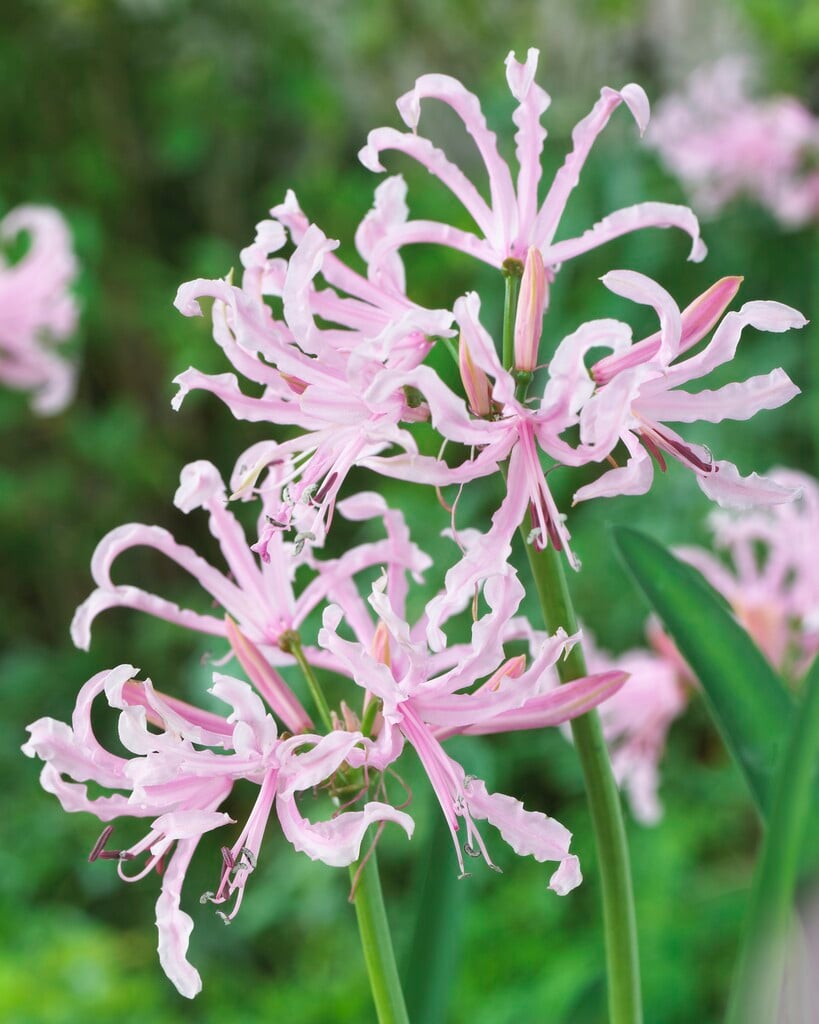Nerine undulata
wavy nerine
A summer-dormant perennial autumn-flowering bulb with large terminal umbels of wavy-petalled funnel-shaped delicate pinkish-purple flowers with a darker tone mid-stripe, followed by the growth of rich green long, strappy foliage in autumn once the temperature drops.
Size
Ultimate height
0.1–0.5 metresTime to ultimate height
2–5 yearsUltimate spread
0–0.1 metreGrowing conditions
Moisture
Well–drainedpH
Acid, Alkaline, NeutralColour & scent
| Stem | Flower | Foliage | Fruit | |
| Spring | ||||
|---|---|---|---|---|
| Summer | ||||
| Autumn | Pink | Green | ||
| Winter |
Position
- Full sun
Aspect
East–facing or South–facing or West–facing
Exposure
Sheltered Hardiness
H5Botanical details
- Family
- Amaryllidaceae
- Native to GB / Ireland
- No
- Foliage
- Deciduous
- Habit
- Columnar upright
- Potentially harmful
- Ornamental bulbs - not to be eaten. Wear gloves and other protective equipment when handling. Pets: Ornamental bulbs - not to be eaten - see the HTA guide to potentially harmful plants for further information and useful contact numbers
- Genus
Nerine are summer-dormant, perennial bulbs with erect leafless stems each bearing a terminal umbel of funnel-shaped flowers in autumn, and strap-shaped or linear leaves appearing after the flowers
- Name status
Correct
- Plant range
- S. Africa
How to grow
Cultivation
Will grow best in well-drained soil preferably in a sheltered position and in full sun for best flowering performance. Plant bulbs 10cm apart with the neck of the bulb showing above the soil except for colder areas where they will prefer to be planted 5cm underground for frost protection. See also Nerine cultivation.
Propagation
Propagate by seed or by division after flowering
Suggested planting locations and garden types
- City and courtyard gardens
- Cottage and informal garden
- Coastal
- Gravel garden
- Mediterranean climate plants
- Patio and container plants
- Flower borders and beds
- Wall side borders
Pruning
Remove spent flower heads to avoid self-seeding and clear away dead foliage once the plant becomes dormant
Pests
May be susceptible to slugs
Diseases
May be susceptible to virus diseases
Love gardening
Sign up to receive regular gardening tips, inspiration, offers and more
View our Privacy Policy
Get involved
The Royal Horticultural Society is the UK’s leading gardening charity. We aim to enrich everyone’s life through plants, and make the UK a greener and more beautiful place.
